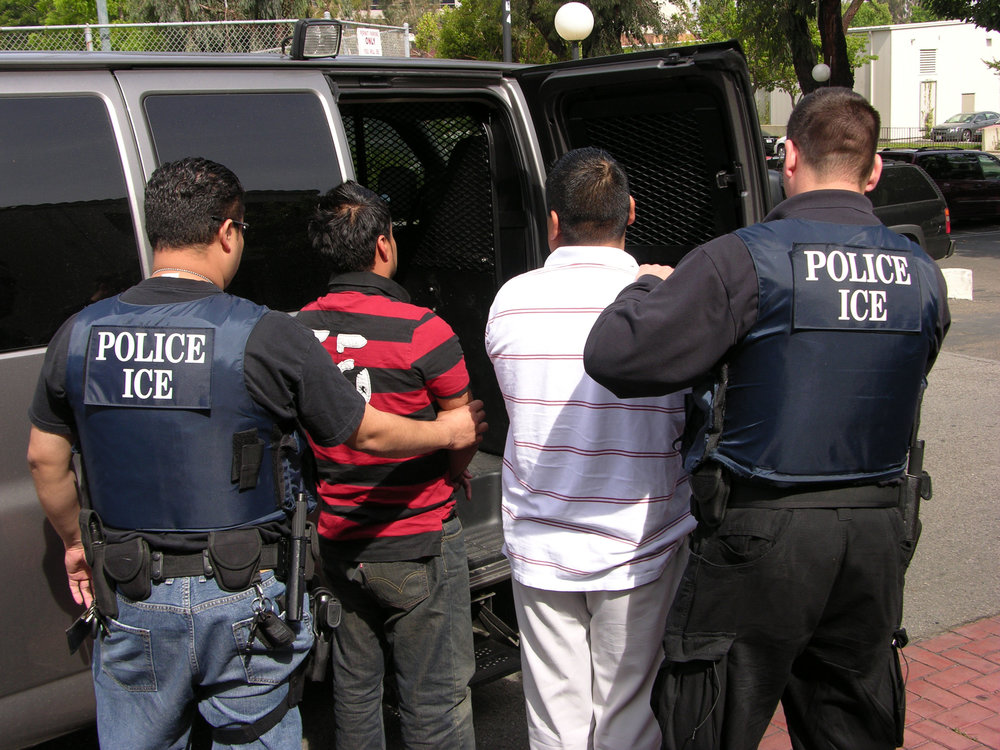U.S. could face human rights crisis after Trump's xenophobic immigration orders

Hidden among the promise of a wall and the withdrawal of funding to sanctuary cities is a much more insidious – and immediate – move to replace the ‘catch and release’ border policy with mandatory detention.
Donald Trump is now effectively at war with undocumented migrants inside the U.S. and those who attempt to cross the southern border without paperwork.
Advisers and analysts alike have long suggested that Trump ought to be taken “seriously but not literally”, but Wednesday’s two executive orders on immigration show that he is living up to the blustering rhetoric of the 2016 election trail.
It was a promise he made throughout an election campaign characterized by xenophobia, and one he has now underlined with a few flicks of the presidential pen.
Attention focused upon Trump’s banner promise to erect a wall across an additional 1,200 miles of the U.S. southern border – an order that will undoubtedly meet with stiff opposition when Congress is lobbied into funding the multibillion-dollar construction project that has, by Trump’s homeland security secretary’s own admission, limited effectiveness in deterring entry.
Sanctuary cities
There was also coverage of the aggressive declaration of intent to withdraw some funding to hundreds of sanctuary cities – those jurisdictions which offer protection to undocumented migrants – which will probably meet with vigorous legal opposition. However, Wednesday’s orders went further and carried instantaneous repercussions through dramatic immigration policy reversals that have been somewhat overlooked in the flurry of executive action.
The order goes broader even than that, allowing ICE officers the ability to target people they assess to be a “risk to public safety or national security”. The order offers no guidance at all on how such a broad definition could be applied, leaving it to the “judgment” of individual ICE agents.
The U.S. will now mandatorily detain any migrant that is caught crossing the border without documentation. Doing away with the era of so-called catch and release that allowed immigration authorities greater freedom to release those claiming asylum ahead of proceedings in immigration court, the order paves the way for a huge expansion of detention facilities at the southern border and is likely to have devastating humanitarian effects.
Nearly 60,000 unaccompanied minors and close to 80,000 families were apprehended at the border in 2016, the vast majority of whom came from countries in Central America plagued by violence.
Now these groups of migrants, who received a degree of flexibility under the Obama administration, will be kept in detention by order.
Advocates routinely report substandard medical care and poorly managed basic facilities in these centers, many of which are operated by for-profit security companies. Coupled with this, the order instructs the U.S. justice department to assign immigration judges, who are already in short supply and heavily overburdened, to these centers.
This in effect makes it far more difficult for these vulnerable migrants, many of whom are likely to have claims for asylum, to reach independent legal counsel and will mean many more are likely to face deportation – perhaps in violation of America’s legal obligations under the UN Refugee Convention.
Trump’s orders also implement aggressive enforcement action inside the country, away from America’s borders.
The president repeatedly claimed throughout the transition period he would deport between 2 million and 3 million undocumented migrants in the country who he claimed were serious criminals. That notion itself is a fallacy, as there are nowhere near that number of undocumented migrants with felony records in the U.S. (researchers estimate the number is closer to 300,000).
Indeed, elements of Trump’s second immigration order acknowledge that fantasy by essentially broadening the definition of serious criminality, giving Immigration and Customs Enforcement (ICE) agents a vast remit to target almost anyone within undocumented communities and perhaps even those holding visas as the order simply targets “removable aliens” – a broad, catchall term that could encompass non-citizens as well.
Not only will ICE agents be allowed to target immigrants with any sort of criminal conviction on their record whatsoever, from minor misdemeanors such as trespassing or vandalism to serious felonies, they will also be able to apprehend individuals who have simply been accused of crimes and subject to investigation.
But Since 2014, the Obama administration had heavily cut back on deportations occurring within the interior of the country, implementing a program of “priority enforcement” that instructed ICE to focus on undocumented migrants picked up by local law enforcement and found to have serious felony convictions on their records.
That short-lived era of discretion is now over. As Trump pledges to significantly bolster the ranks of ICE agents and border patrol officers, he will effectively control a small army of enforcers empowered by a remit that is both harsh and broad.
(Source: The Guardian)
Leave a Comment